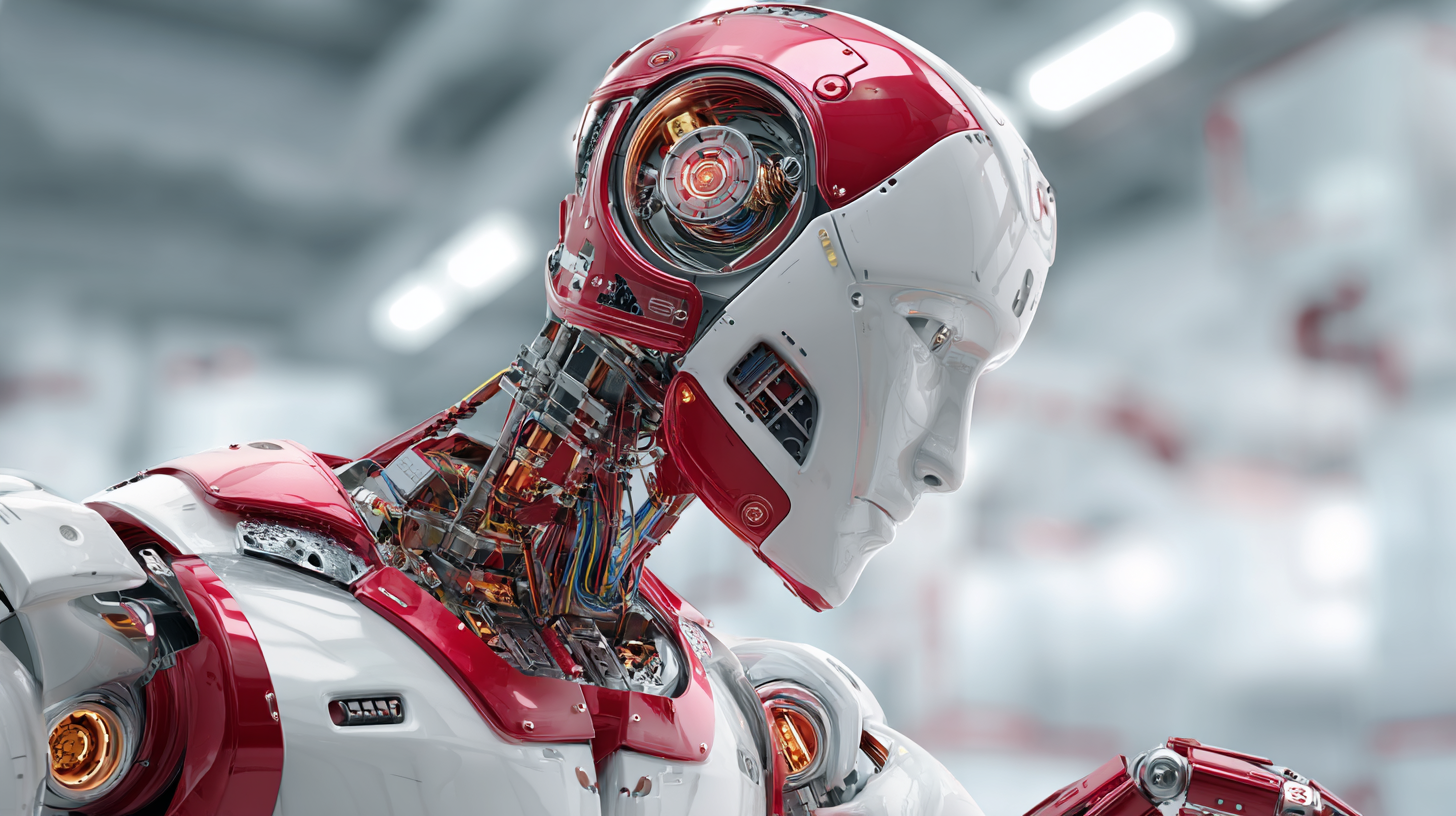Taking Custom Design to New Levels
PROUD TO BE PART OF THE BRIN FAMILY OF COMPANIES

OTHER BRIN LOCATIONS
Brin Glass Company | Minneapolis, MN
St. Germain’s Glass | Duluth, MN
Heartland Glass | Waite Park, MN
 The rapid advancement of technology has fostered a surge in demand for skilled professionals in the field of robotics, highlighting the importance of robotics engineering courses in shaping the future of innovation. According to a recent report by the International Federation of Robotics, the global market for industrial robots is expected to reach $83 billion by 2025, driven by an increasing reliance on automation across various industries. As companies seek to improve efficiency and competitiveness, a solid foundation in robotics engineering becomes essential. These courses equip students with the critical skills necessary to design, program, and implement robotic systems, addressing a projected shortage of 1.2 million skilled workers in the robotics sector by 2026. By investing in robotics engineering education, we not only prepare a new generation of innovators but also unlock unprecedented potential for technological advancements that can transform industries and society as a whole.
The rapid advancement of technology has fostered a surge in demand for skilled professionals in the field of robotics, highlighting the importance of robotics engineering courses in shaping the future of innovation. According to a recent report by the International Federation of Robotics, the global market for industrial robots is expected to reach $83 billion by 2025, driven by an increasing reliance on automation across various industries. As companies seek to improve efficiency and competitiveness, a solid foundation in robotics engineering becomes essential. These courses equip students with the critical skills necessary to design, program, and implement robotic systems, addressing a projected shortage of 1.2 million skilled workers in the robotics sector by 2026. By investing in robotics engineering education, we not only prepare a new generation of innovators but also unlock unprecedented potential for technological advancements that can transform industries and society as a whole.
In recent years, there has been a notable surge in robotics engineering courses within higher education, reflecting a broader trend of innovation and technological advancement. This increase can largely be attributed to the growing demand for skilled professionals in fields that intersect with robotics, artificial intelligence, and machine learning. As institutions expand their curricula to include these programs, they are equipping students with the necessary skills to thrive in an evolving job market. The popularity of these courses is also influenced by increased financial and academic support for first-generation college students, allowing a more diverse group of learners to engage with cutting-edge technology.

Moreover, programs focused on robotics are not just limited to traditional engineering but are also expanding into interdisciplinary fields, paving the way for innovations in various industries. This is evident in initiatives like extracurricular labs and after-school programs which aim to diversify the tech sector, encouraging students from diverse backgrounds to participate in hands-on learning experiences. The emphasis on practical applications and collaborative projects ensures that graduates are not only technically proficient but also prepared to tackle real-world challenges through innovative solutions. The landscape of higher education continues to evolve as it embraces the transformative power of robotics and its potential to unlock future innovations.
Robotics education is not just about learning how to build machines; it's about cultivating a wide range of skills and competencies essential for future innovations. Students delve into critical thinking, problem-solving, and creativity, which are pivotal in designing and improving robotic systems. Furthermore, hands-on experience with programming and electronics provides a technical foundation that empowers learners to innovate across various industries.

Tip: When selecting a robotics course, look for programs that emphasize project-based learning. This approach will allow you to apply theoretical knowledge to real-world problems, enhancing your understanding and skills.
Collaboration is another key competency developed through robotics courses. Working in teams to tackle complex challenges fosters communication skills and promotes a diverse range of ideas. Moreover, exposure to interdisciplinary concepts in robotics, such as artificial intelligence and mechanical design, prepares students for the multifaceted demands of modern engineering fields.
Tip: Engage with online communities or local robotics clubs to expand your network and gain insights from experienced professionals. These connections can provide valuable opportunities for collaboration and mentorship in your robotics journey.
As robotics technology continues to advance, its impact on future job markets and employment opportunities becomes increasingly significant. The integration of robotics across various sectors, such as manufacturing, healthcare, and agriculture, is transforming traditional roles and creating new ones that did not exist a decade ago. This shift necessitates a workforce equipped with specialized skills in robotics engineering, driving demand for educational programs focused on this field.
Robotics engineering courses not only prepare students for technical roles but also equip them with problem-solving and critical-thinking skills essential in a rapidly changing job landscape. As businesses embrace automation, there will be a growing need for professionals who can design, program, and maintain robotic systems. Moreover, these courses encourage innovation, ultimately leading to the development of new technologies that will shape industries. The ability to adapt and thrive in a market influenced by robotics will be crucial for future job seekers, making these educational avenues vital for ensuring career sustainability and growth in the long term.
The field of robotics engineering has been a catalyst for groundbreaking innovations, offering students hands-on experience that translates directly into successful real-world applications. One notable case study is the development of autonomous drones for agricultural monitoring. A group of engineering students created a project to enhance crop surveillance, using drones equipped with sensors that could gather data on soil health and crop conditions. This innovation not only improved yield predictions but also helped farmers optimize their resources, demonstrating the power of robotics engineering in addressing modern farming challenges.
Another significant example is the creation of robotic prosthetics by a team of students as part of their coursework. They designed a prosthetic hand that mimics human motion, utilizing advanced robotics technology to provide users with improved dexterity and control. Their project not only showcased the technical skills acquired during their studies but also highlighted the positive impact of robotics on enhancing the quality of life for individuals with disabilities. Such innovations exemplify the vital role that robotics engineering courses play in nurturing creativity and problem-solving abilities among aspiring engineers.
The advent of Industry 4.0 marks a profound shift in manufacturing and service sectors, propelled by the integration of advanced technologies. Robotics plays a pivotal role in this transformation by enhancing efficiency and productivity. With the development of smart factories, where machines communicate and collaborate seamlessly, robotics engineering becomes essential for students and professionals seeking to navigate this evolving landscape. Courses in robotics engineering equip learners with the necessary skills to design, program, and implement robotic systems that optimize operations and reduce human error.
Emerging technologies such as artificial intelligence, machine learning, and the Internet of Things (IoT) are further amplifying the impact of robotics in Industry 4.0. These innovations enable robots to perform complex tasks autonomously, adapt to changing environments, and analyze vast amounts of data for improved decision-making. As industries increasingly rely on these capabilities, robotics engineering courses will not only focus on technical skills but also emphasize interdisciplinary approaches that merge programming with insights from data science and engineering principles. This holistic education will be crucial for producing professionals who can lead the way in the dynamic landscape of modern industry.




Taking Custom Design to New Levels

Brin Glass Company | Minneapolis, MN
St. Germain’s Glass | Duluth, MN
Heartland Glass | Waite Park, MN

Fabricator
Inside Sales and Client Support Manager
Glass Handler – 1st Shift